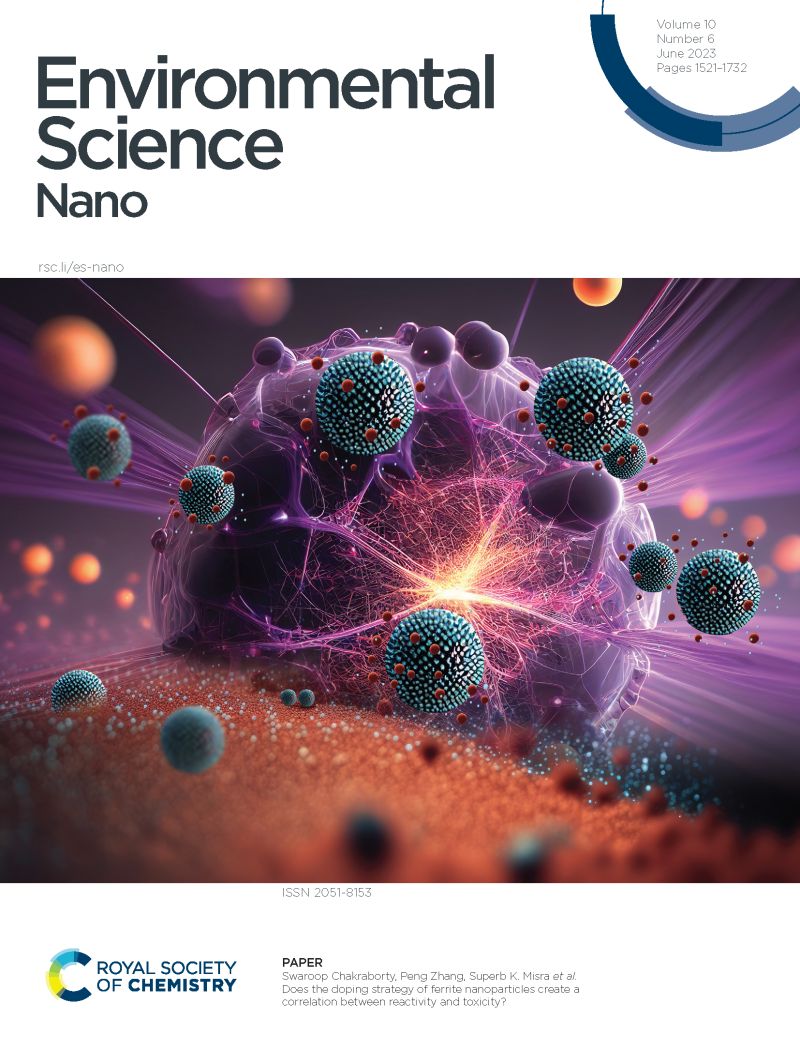Emerging 2D MXene-conjugated nanoarchitectures for nanozymes: Current advances and future frontiers in biochemical sensing technologies
IF 5.1
2区 环境科学与生态学
Q1 CHEMISTRY, MULTIDISCIPLINARY
引用次数: 0
Abstract
Nanozymes, nanostructured materials with exceptional catalytic performance, are recognized for their unique benefits over natural enzymes, including notably low fabrication costs and high chemical stability. Emerging as a captivating frontier in nanozyme research, MXene-based composite material nanozymes (MXzymes) have sparked intense research interests owing to their unique compositions and structural features, which can be engineered to unlock their enzyme-mimicking catalytic prowess. This approach opens groundbreaking opportunities for detecting biologically significant, food-related, and environmentally crucial analytes. This review highlights the innovative fabrication methods of MXzymes, focusing on their diverse nanozyme activity types reported thus far, including peroxidase-like and oxidase-like functionalities, while unveiling the underlying catalytic mechanisms in detail. In addition, recent pioneering breakthroughs in MXzymes are comprehensively reviewed, including catalytic signal amplification by MXzymes, which can function as cutting-edge sensing platforms as evidenced by colorimetric, smartphone-based, chemiluminescent, electrochemical, and surface-enhanced Raman scattering-based analyses. Finally, the promising potential applications of MXzymes and fundamental challenges associated with their scalability, stability, and biocompatibility for MXzymes-based chemical/biomedical sensors are addressed.用于纳米酶的新兴二维mxene共轭纳米结构:生物化学传感技术的当前进展和未来前沿
纳米酶是一种具有特殊催化性能的纳米结构材料,它比天然酶具有更独特的优势,包括低制造成本和高化学稳定性。作为纳米酶研究的前沿,基于mxene的复合材料纳米酶(MXzymes)由于其独特的组成和结构特征引发了强烈的研究兴趣,这些特征可以通过工程设计来释放其模拟酶的催化能力。这种方法为检测具有生物学意义的、与食品相关的和对环境至关重要的分析物开辟了开创性的机会。本文综述了MXzymes的创新制备方法,重点介绍了迄今为止报道的MXzymes的多种纳米酶活性类型,包括过氧化物酶和氧化酶样功能,并详细揭示了其潜在的催化机制。此外,本文还全面回顾了MXzymes的最新突破性进展,包括MXzymes的催化信号放大,它可以作为前沿的传感平台,如比色法、智能手机、化学发光、电化学和基于表面增强拉曼散射的分析。最后,讨论了MXzymes的潜在应用前景,以及与基于MXzymes的化学/生物医学传感器的可扩展性、稳定性和生物相容性相关的基本挑战。
本文章由计算机程序翻译,如有差异,请以英文原文为准。
求助全文
约1分钟内获得全文
求助全文
来源期刊

Environmental Science: Nano
CHEMISTRY, MULTIDISCIPLINARY-ENVIRONMENTAL SCIENCES
CiteScore
12.20
自引率
5.50%
发文量
290
审稿时长
2.1 months
期刊介绍:
Environmental Science: Nano serves as a comprehensive and high-impact peer-reviewed source of information on the design and demonstration of engineered nanomaterials for environment-based applications. It also covers the interactions between engineered, natural, and incidental nanomaterials with biological and environmental systems. This scope includes, but is not limited to, the following topic areas:
Novel nanomaterial-based applications for water, air, soil, food, and energy sustainability
Nanomaterial interactions with biological systems and nanotoxicology
Environmental fate, reactivity, and transformations of nanoscale materials
Nanoscale processes in the environment
Sustainable nanotechnology including rational nanomaterial design, life cycle assessment, risk/benefit analysis
 求助内容:
求助内容: 应助结果提醒方式:
应助结果提醒方式:


